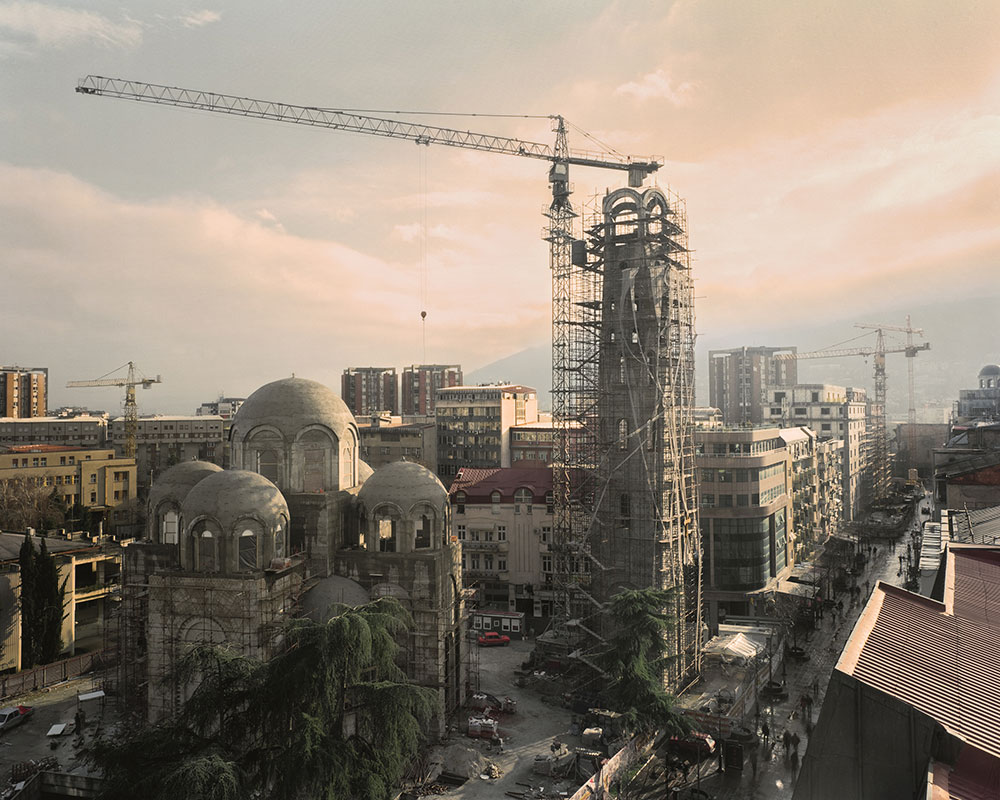Traces of fantasy: the trauma and dynamism of Romania’s urban transformation
Romanian photographer Dani Gherca is committed to using his visual practice to understand the social context around him; in his words, he tries to get at “memory, morality, veracity and symbolic logic”. Previous projects have explored his hometown of Bucharest, from underground tunnels to soaring tower blocks. ExtazTerestru documented the lives of the city’s population of subterranean drug users and their figurehead, “Bruce Lee”; A Diagram of Utopia focused on three working-class neighbourhoods built in the 1970s and ‘80s and was an attempt at capturing a “subjective radiogram” of Gherca’s childhood.
The project is about his own childhood and about the trauma and dynamism of Romania’s very recent urbanisation
Now he has decided to move beyond the capital to tackle Romania as a whole. Since February this year, Gherca has been engaged in a new, long-term project titled Traces of Fantasy. Over the course of three years, he intends to document the architecture of the 1970s and ‘80s in different Romanian cities.
“Consciously, I think that the initial inspiration was when I discovered, in 2014, the work of the Spanish architect Ricardo Bofill, especially his works in the outskirts of Paris,” Gherca says. Bofill’s housing projects in the 14th arrondissement, which made heavy use of precast concrete and geometric patterning, put Gherca in mind of “the relationship between the ideological practices that underlie the development of the urban space, and the way that these influence the social manifestation of the individual”, and set him on the path to Traces.
When Gherca speaks of the ‘morality’ of buildings, he is not talking of the aspects of architectural design, but the ideology that produces the urbanism in question
The Calvert Journal is publishing a selection of images made thus far, as Gherca embarks on this ambitious photographic expedition. The project is about his own childhood — his parents moved to Bucharest in the 1970s and he grew up with these buildings — and about the trauma and dynamism of Romania’s (only very recent) urbanisation.
“In 1948, 23.4% of the Romanian population lived in urban areas: in 1989 it was 53.2%. In 41 years, Romania suffered a major transformation, from an agrarian society into an industrialised one. The massive migration was made by force without taking into account the people’s desire.” When Gherca speaks of the “morality” of buildings, he is not talking of the merits or other aspects of architectural design, but the ideology that produces the urbanism in question: “Is it moral to use the power of state institutions to modify the traditions and beliefs of the population?”
Traces of Fantasy will focus on two types of buildings: public housing and public institutions. These were two urban forms that were used to proclaim the greatness of the communist cause, before being denounced post-1989 as grotesque examples of that same cause’s folly. Gherca hopes that his project will steer a course between these rhetorical extremes, exploring instead how exactly it is that this “functional community [of buildings] tentatively plays a role” in real Romanian society today.
Text: Samuel Goff
Image: Dani Gherca









